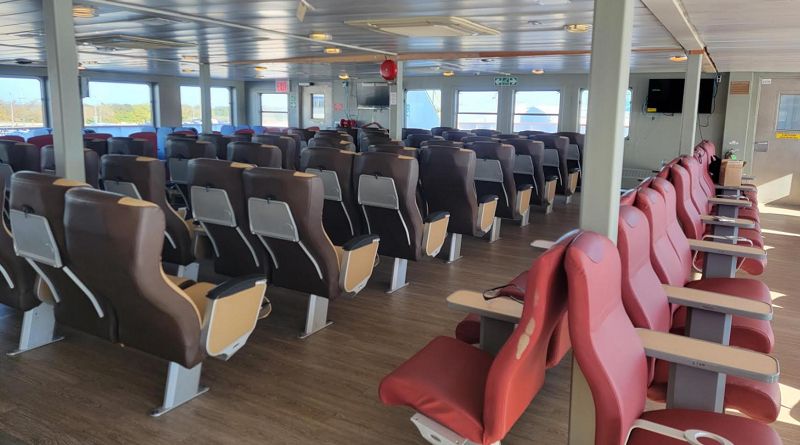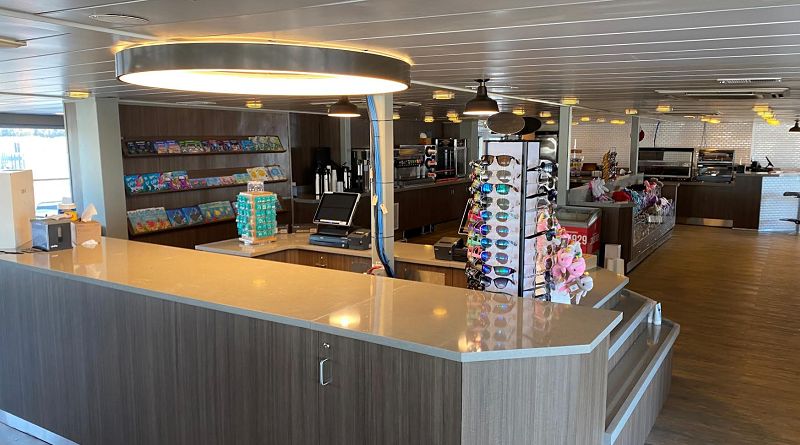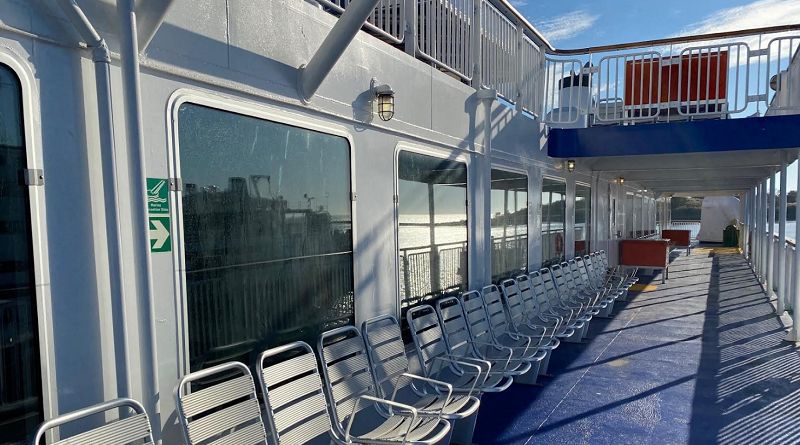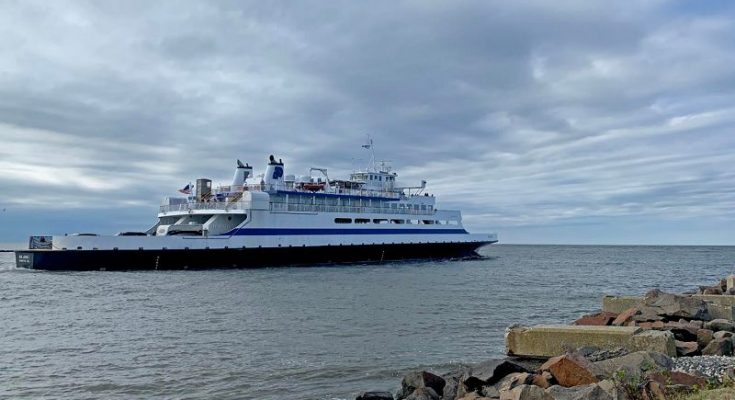Today, the MV New Jersey, one of three vessels in the Cape May – Lewes Ferry fleet, returned home following nearly a year-long dry-docking, which involved a comprehensive overhaul and repowering at Caddell’s Drydock and Repair Company in Staten Island, New York. The MV New Jersey’s new EMD (Electro-Motive Division) engines are expected to reduce emissions by approximately 40%. The total cost of the dry-docking and overhaul project, including the cost of the new engines, was $20.2 million – including a $3.0 million grant from the Federal Transit Administration.
“We are excited to have the MV New Jersey back and we know our customers will be happy to have her back, too.” said Heath Gehrke, Director of Ferry Operations for the Cape May – Lewes Ferry. “This repowering and the renovations during this dry-docking were the most comprehensive, complex, and expensive Ferry project in more than two decades. With continued pent-up demand for vacation travel post-COVID, she’ll definitely be a welcomed addition to our schedule.”
The repowering initiative has several goals, one of which is the replacement of the old, World War II-era Fairbanks-Morse engines for which it is increasingly difficult to find replacement parts. But the primary reason is to drastically reduce the amount of pollutants this old technology emits.
Gehrke also noted that the Ferry expects to save approximately $130,000 per year in maintenance costs associated with old engines. The existing Fairbanks Morse engines are overhauled every 10,000 hours compared to every 30,000 hours for the new ones.
The MV New Jersey arrived at Caddell Shipyard in Staten Island, NY on November 5. In addition to installing new engines, reduction gears and generators during this drydocking, other significant elements of the project included water blasting and repainting the entire exterior of the vessel; replacing steel bulkheads; replacing exterior windows; renovating and modernizing the passenger galley area; sandblasting and painting the underwater hull; fabricating new smokestacks; and performing void space maintenance.
The MV New Jersey was equipped with two Fairbanks Morse 38D8-1/8 propulsion engines with a power rating of 2,060 horsepower each. Nearly 50 years old, these workhorse engines are approaching 100,000 operating hours or the equivalent of 1.5 million miles.
The Federal Transit Administration’s (FTA) Passenger Ferry Grant program resources are awarded based on factors such as the age and condition of existing ferry boats, terminals, and related infrastructure; benefits to riders, such as increased reliability; project readiness; and connectivity to other modes of transportation. The repowering component of this project will increase reliability of the service, improve operational capability by permitting better maneuverability, and reduce maintenance ne
Source: Delaware River and Bay Authority
[media-credit name=”DRBA” align=”aligncenter” width=”800″] [/media-credit]
[/media-credit]
[media-credit name=”DRBA” align=”aligncenter” width=”800″] [/media-credit]
[/media-credit]
[media-credit name=”DRBA” align=”aligncenter” width=”800″] [/media-credit]
[/media-credit]
[media-credit name=”DRBA” align=”aligncenter” width=”800″] [/media-credit]
[/media-credit]

